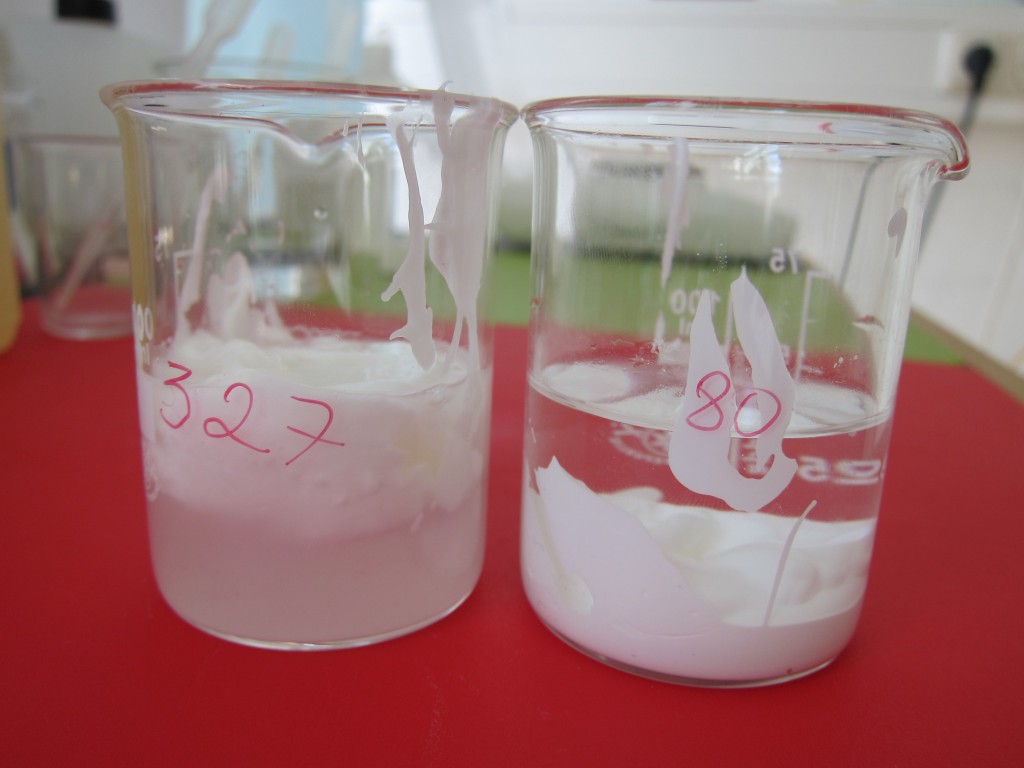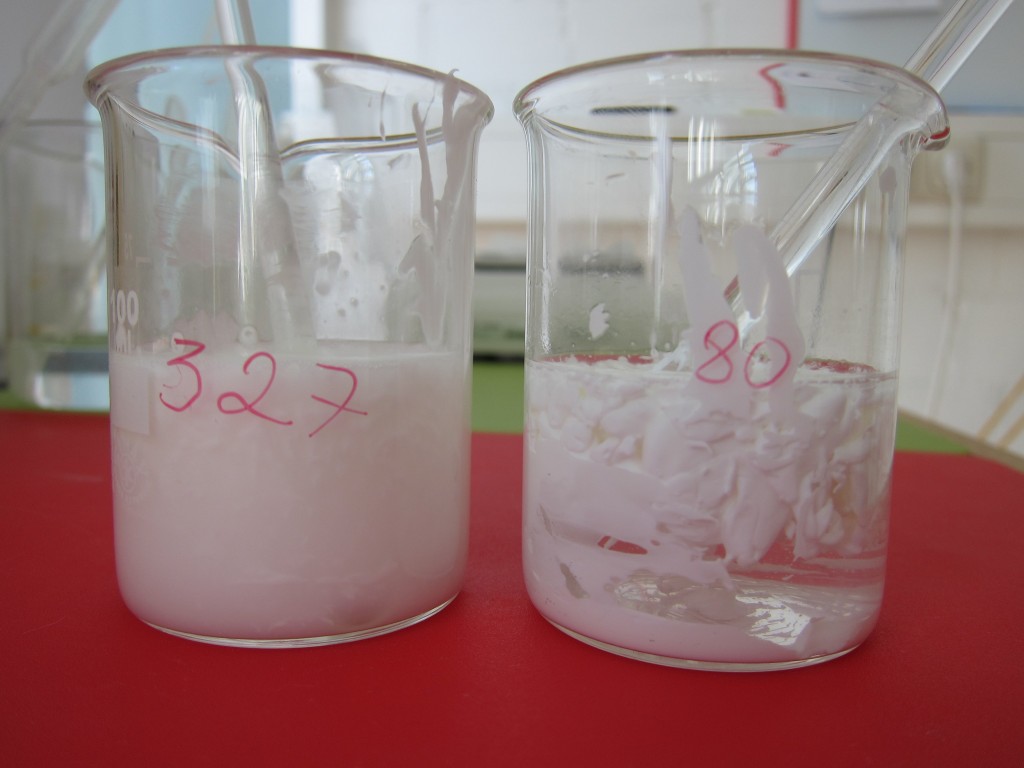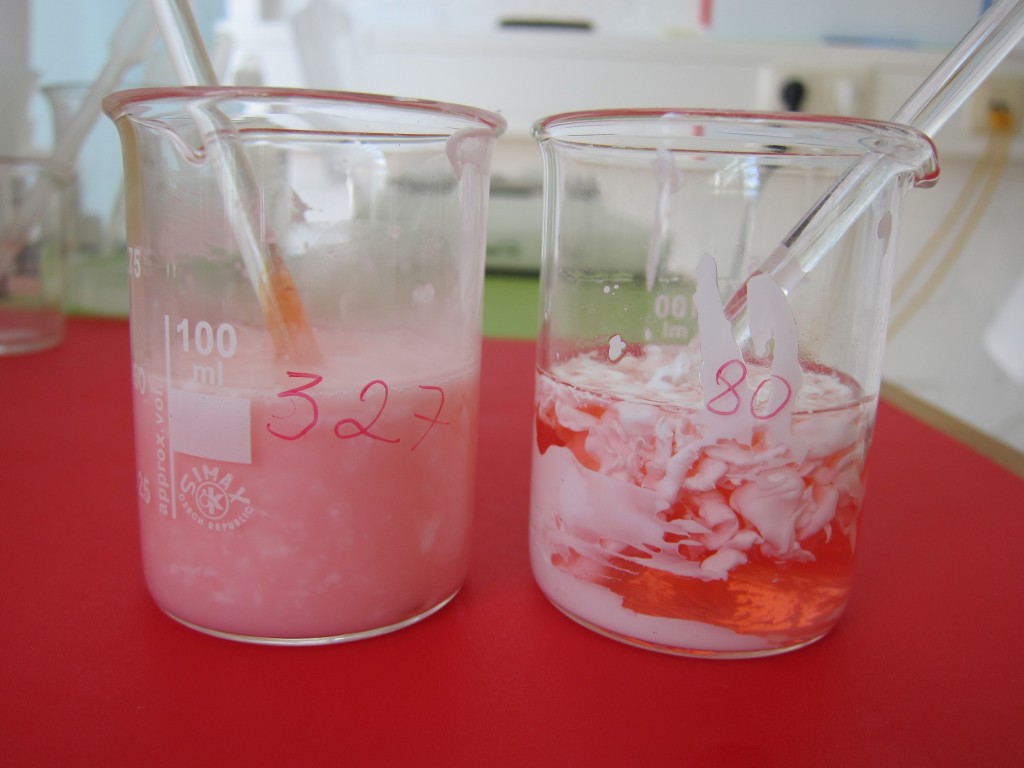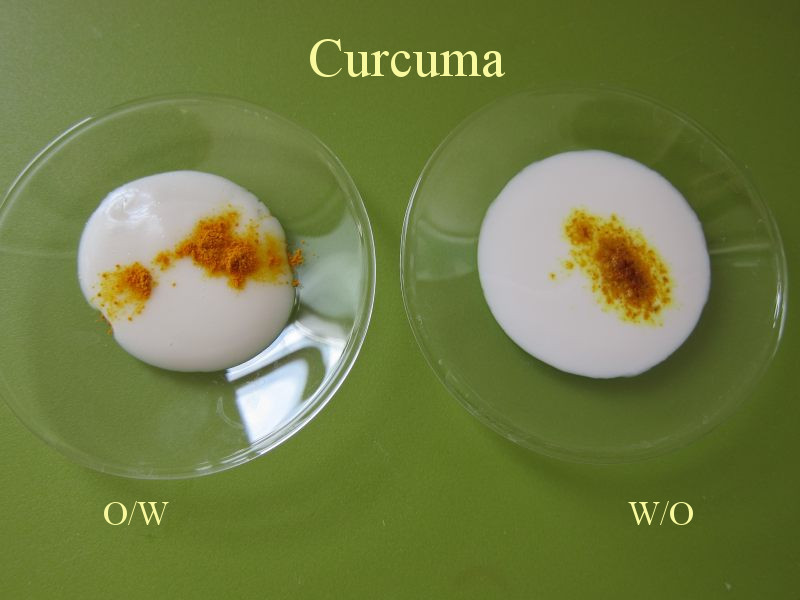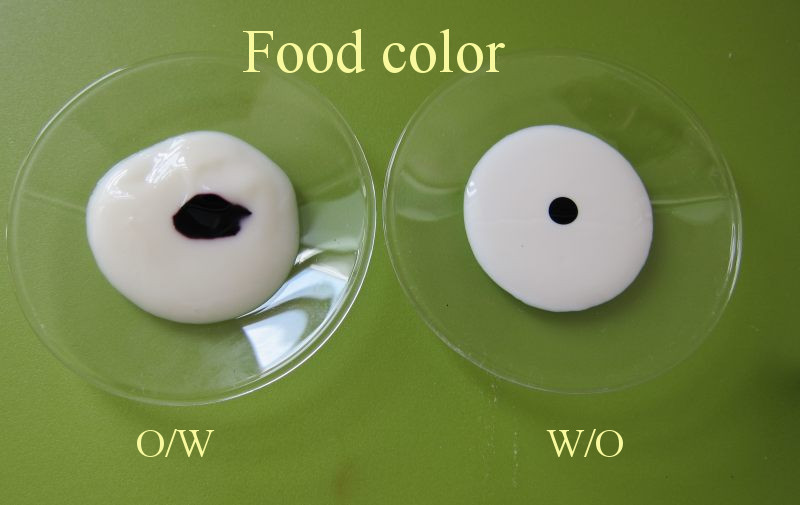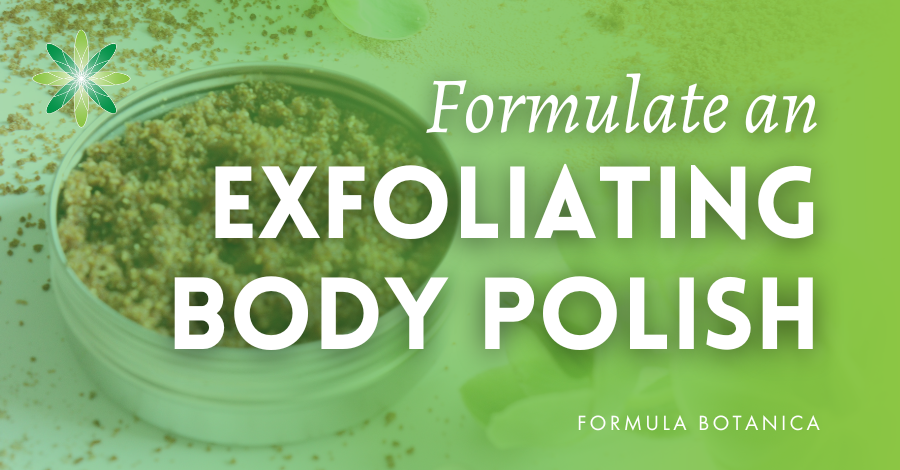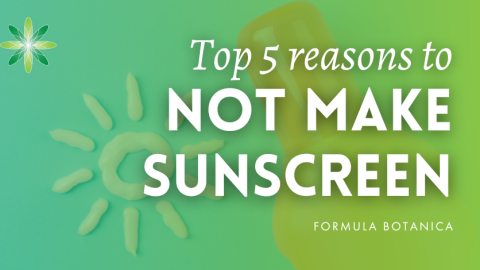Theoretically, knowing the Hydrophilic-Lipophilic Balanace (HLB) of your chosen emulsifier should help you determine whether you’ve prepared a water-in-oil (W/O) or an oil-in-water (O/W) emulsion. I’m here to tell you that unfortunately the science is not always that simple.
Depending on the emulsifier you choose, it is possible that you come to unexpected results and that your cosmetic emulsion is not what you think it is.
A hydrophobic (water-hating) emulsifier with a low HLB (suitable for W/O emulsions) might absorb water molecules and become more hydrophilic and at the end create an O/W emulsion – this can for instance often happen with Lecithin derivatives.
Or sometimes by temperature changes occurring during the emulsification process, a “phase inversion” might happen and turn a W/O emulsifier to an O/W or vice versa. This can happen at a temperature called PIT (phase inversion temperature) which is almost unique for each emulsifier and its composition.
What kind of Cosmetic Emulsion have you made?
I’m not going to bore you with theory and phase behaviour of surfactants and emulsifiers. What you need to know, in case of any doubt is the nature of your emulsion: W/O or O/W?
There are very simple and basic tests which can disclose the nature of the cosmetic emulsion in a few seconds. Of course there are complicated and instrumental tests as well (such as measuring the conductivity of the dispersion) but this is not necessary in order to show you the nature of your emulsion.
In the following picture, we’ve prepared a 30% dispersion of a W/O and an O/W emulsion in water. Emulsion #80 is, as you may have guessed a W/O emulsion and emulsion # 327 is an O/W one.
In this second photo, we’ve stirred the dispersions with a glass rod. As you see, the O/W emulsion blends and disperses in water whereas the W/O repels water and does not blend with water.
In this third photo, we added a drop of a water based food colour to each emulsion.
In this final photo, after stirring the mixture, the O/W emulsion turns pink, meaning the colour blends with the emulsion whereas the W/O emulsion remains white in a surrounding pink solution.
You can even apply the colorant directly to the lotion to guess its character. In these photos, I’ve applied curcuma powder (oil soluble) and a food color (water soluble) directly to W/O and O/W lotions. Instead of an aqueous food colorant you can add beetroot powder or any other water soluble color.
As you see, curcuma starts to disperse in the W/O lotion (it even becomes wet of the surface) whereas it remains on top of the O/W lotion. This dispersion takes a long time however and is rather slow.
The dispersion of the water based color is quite fast. Apply only one single drop or a very small portion of powder and you can easily distinguish a W/O from an O/W emulsion.
By following these simple steps, you see that you can run a very simple test in a few minutes to determine the nature of your cosmetic emulsion. Want to learn how to make an emulsion? Sign up for one of our courses.
Have you ever tested your cosmetic emulsions? Share your comments below and tell us all about it!
Leave us a comment

Dr. Elham Eghbali was Formula Botanica’s Cosmetic Chemist between 2014 and 2018. She has over 20 years’ industry experience and is based in Bavaria, Germany. To read more about Formula Botanica’s team, visit our staff page.


